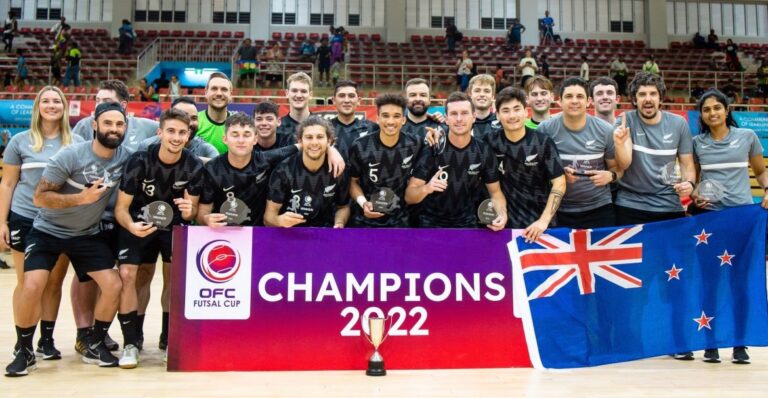The OFC Futsal Nations Cup is the major international tournament for Oceanian countries to compete in for a chance of silverware and qualification to the following FIFA Futsal World Cup.
Australia, who have also participated in the AFC Asia Cup on occasion, largely dominated the tournament’s early history, winning four of the first five OFC Futsal Nations Cups. However, in recent years the tournaments have become vastly more competitive and has seen several different winners.
However, the tournament also serves as an opportunity to qualify for the FIFA Futsal World Cup, which means it’s so much more than simply winning silverware. The FIFA Futsal World Cup provides Oceanian futsal players, who may not usually receive much press coverage, the opportunity to compete against the best teams in the world, gain exposure to scouts from Europe and South America’s best clubs, and ultimately propel their careers.
In fact, most Oceanian futsal players are not professional and have to take time off their day jobs to compete in the various tournaments played in Oceania, Asia, and the wider world every year. Strong performance on the world stage vastly increases the chances of Oceanian players being spotted and turning their hobby into a full-time, paying job.
But what is the format of the OFC Futsal Nations Cup and how many countries qualify to play in the following FIFA Futsal World Cup?
The Format of the OFC Futsal Nations Cup
The Oceania Football Confederation represents fewer countries than any other major confederation across the world. As a result, the tournament is significantly small than others, such as the UEFA Futsal World Cup Qualifiers or Copa America de Futsal in its nature.
- Only 15 teams have ever competed at an Oceania Futsal Nations Cup
- The tournament occurs sporadically. Originally, it was every four years, but now it varies between being played every year or bi-yearly.
- However, the tournament is always held in the same year as the FIFA Futsal World Cup to serve as a qualification tournament.
- Eight teams feature in every tournament.
- The eight teams are split into two groups of four. The two best-performing teams from each group proceed to the semi-finals.
- The bottom two teams from each group proceed to play in the 5th to 8th place play-off.
- Winners of the semi-final proceed to the final
- The winner of the final wins the OFC Futsal Nations Cup and qualifies for the following FIFA Futsal World Cup.
Solomon Islands: Oceania’s Futsal Powerhouse
Since Australia’s early dominance in the competition, we’ve seen the emergence of a new futsal powerhouse on the continent: Solomon Islands.
Solomon Islands have won the tournament on a record-breaking six occasions and are determined to continue their strong performances in the OFC Futsal Nations Cup and progress further in FIFA Futsal World Cups.
But why is this tiny set of 900 islands nation, with a population of little over 700,000 so good at futsal, you might ask?
- The Solomon Islands’ futsal team is probably the nation’s most popular team in any sport.
- The frequent opportunity to play in World Cups, in which they’ve competed on four separate occasions, gives the sport great exposure and popularity on the islands.
- Children in the Solomon Islands dream of representing their nation in futsal rather than other more widely popular sports on the continent, such as cricket, rugby, and football.
But Will the Solomon Islands be at This Autumn’s FIFA Futsal World Cup?
No! New Zealand have won the past two OFC Futsal Nations Cups and will be heading to Uzbekistan, to represent a continent that has traditionally struggled to compete with the rest of the world when it comes to futsal.
2024 will be New Zealand’s first appearance at a FIFA Futsal World Cup and will be hoping to become the first Oceanian futsal team to make it out of the group stages.
However, it won’t be easy. Despite the ‘futsal whites’ winning the past two OFC Futsal Nations Cup, they will be one of the lowest-ranked teams going into this year’s FIFA Futsal World Cup at 49th. It’ll be a great experience for the New Zealand players and supporters, but expectations of further success will be somewhat limited.

